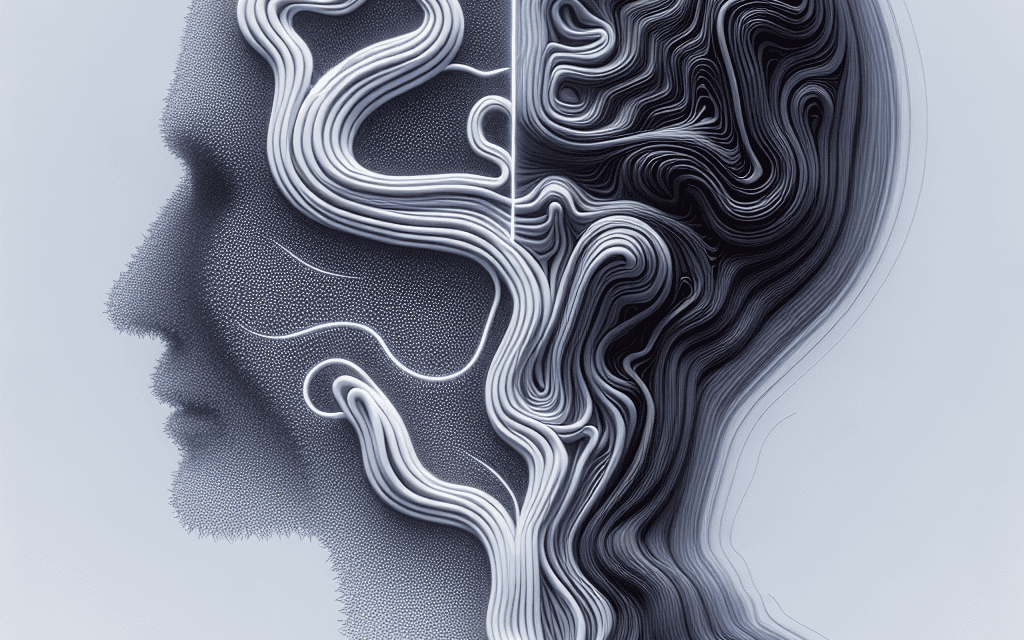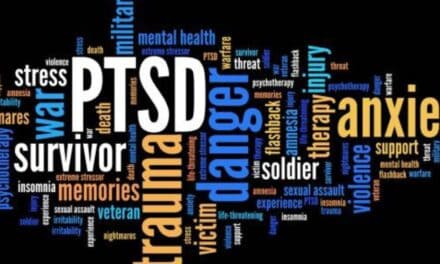The Impact of Anxiety and Depression on Our Movement Patterns
Anxiety and depression are two of the most prevalent mental health disorders affecting millions of people worldwide. While the emotional and psychological effects of these conditions are well-documented, their impact on physical movement patterns is often overlooked. This article delves into the intricate relationship between mental health and movement, exploring how anxiety and depression can alter our physical behaviors, posture, and overall mobility. We will examine five key subtopics: the physiological effects of anxiety and depression, changes in posture and body language, the role of movement in mental health, the impact on physical activity levels, and therapeutic approaches to improve movement patterns.
The Physiological Effects of Anxiety and Depression
Anxiety and depression are not just emotional states; they manifest physically in various ways. Understanding the physiological effects of these mental health conditions is crucial for recognizing how they influence movement patterns.
When a person experiences anxiety, the body enters a state of heightened arousal, often referred to as the “fight or flight” response. This response triggers the release of stress hormones such as cortisol and adrenaline, which prepare the body to react to perceived threats. While this response can be beneficial in short bursts, chronic anxiety leads to prolonged physiological changes that can affect movement.
- Muscle Tension: Chronic anxiety often results in increased muscle tension, particularly in the neck, shoulders, and back. This tension can lead to discomfort and pain, which may alter how a person moves. For instance, someone with tight shoulder muscles may adopt a hunched posture, limiting their range of motion.
- Coordination and Balance: Anxiety can impair coordination and balance due to heightened nervous system activity. Individuals may experience tremors or shakiness, making it difficult to perform tasks that require fine motor skills.
- Fatigue: Depression is often associated with fatigue and low energy levels. This can lead to a decrease in physical activity, resulting in weakened muscles and reduced endurance, further impacting movement patterns.
- Breathing Patterns: Anxiety can lead to shallow or rapid breathing, which may affect oxygen delivery to muscles. This can result in feelings of dizziness or lightheadedness, further complicating movement.
Research has shown that individuals with anxiety disorders often exhibit altered movement patterns. A study published in the journal “Psychological Science” found that anxious individuals tend to move more cautiously and exhibit slower reaction times. This can lead to a cycle where anxiety affects movement, and altered movement patterns, in turn, exacerbate feelings of anxiety.
Changes in Posture and Body Language
Posture and body language are powerful indicators of mental health. Anxiety and depression can significantly alter how individuals carry themselves, which can have social and psychological implications.
Individuals suffering from anxiety may exhibit closed body language, such as crossed arms or hunched shoulders, as a subconscious attempt to protect themselves. This posture can signal discomfort or insecurity, potentially leading to social withdrawal. Conversely, those with depression may display a lack of energy in their movements, often appearing slumped or lethargic.
- Postural Changes: Research indicates that individuals with depression often have a forward head posture and rounded shoulders. This can create a feedback loop where poor posture contributes to feelings of sadness and hopelessness.
- Facial Expressions: Anxiety and depression can also affect facial expressions. Individuals may have a flat affect, which can lead to misunderstandings in social interactions. For example, a person with depression may not smile or engage in eye contact, leading others to perceive them as unfriendly.
- Movement Speed: Anxiety can lead to fidgeting or rapid movements, while depression may result in slower, more deliberate actions. These differences can affect how individuals are perceived in social situations, impacting their relationships and self-esteem.
Case studies have shown that individuals with anxiety disorders often report feeling more self-conscious about their body language, which can lead to avoidance of social situations. This avoidance can further entrench feelings of isolation and exacerbate mental health issues.
The Role of Movement in Mental Health
Movement plays a crucial role in mental health, serving as both a symptom and a potential treatment for anxiety and depression. Understanding this relationship can help individuals develop healthier movement patterns.
Physical activity has been shown to release endorphins, the body’s natural mood lifters. Regular exercise can reduce symptoms of anxiety and depression, leading to improved movement patterns. For instance, individuals who engage in regular aerobic exercise often report feeling more energetic and less anxious.
- Exercise as a Treatment: Numerous studies have demonstrated the efficacy of exercise in treating anxiety and depression. A meta-analysis published in “JAMA Psychiatry” found that physical activity significantly reduces symptoms of both conditions, highlighting the importance of incorporating movement into treatment plans.
- Mind-Body Practices: Practices such as yoga and tai chi emphasize the connection between movement and mental health. These activities promote mindfulness and relaxation, helping individuals manage anxiety and depression while improving flexibility and strength.
- Social Interaction: Group exercise classes can provide social support, which is beneficial for mental health. Engaging in physical activity with others can reduce feelings of isolation and foster a sense of community.
Moreover, the act of moving can serve as a form of self-expression. Dance therapy, for example, allows individuals to explore their emotions through movement, providing a creative outlet for those struggling with anxiety and depression. This form of therapy has been shown to improve mood and enhance body awareness, leading to healthier movement patterns.
The Impact on Physical Activity Levels
Anxiety and depression can significantly impact an individual’s motivation to engage in physical activity. Understanding these effects is essential for developing strategies to encourage movement.
Individuals with anxiety may avoid physical activity due to fear of judgment or panic attacks. This avoidance can lead to a sedentary lifestyle, which is associated with a host of physical health issues, including obesity, cardiovascular disease, and diabetes. Similarly, depression often results in a lack of motivation, making it challenging for individuals to engage in regular exercise.
- Barriers to Exercise: Common barriers to exercise for those with anxiety and depression include:
- Fear of social situations
- Lack of energy or motivation
- Negative self-perception
- Physical discomfort or pain
- Difficulty establishing a routine
- Consequences of Sedentary Behavior: A sedentary lifestyle can exacerbate symptoms of anxiety and depression, creating a vicious cycle. Research has shown that individuals who engage in regular physical activity report lower levels of anxiety and depression.
- Encouraging Movement: Strategies to encourage physical activity among those with anxiety and depression include:
- Setting realistic goals
- Finding enjoyable activities
- Incorporating movement into daily routines
- Seeking social support
- Practicing mindfulness during exercise
Case studies have demonstrated that even small amounts of physical activity can lead to significant improvements in mood and overall well-being. For example, a study published in “Psychosomatic Medicine” found that individuals who engaged in just 30 minutes of moderate exercise three times a week experienced a reduction in depressive symptoms.
Therapeutic Approaches to Improve Movement Patterns
Addressing the impact of anxiety and depression on movement patterns requires a multifaceted approach. Various therapeutic strategies can help individuals regain control over their movement and improve their mental health.
One effective approach is cognitive-behavioral therapy (CBT), which focuses on changing negative thought patterns that contribute to anxiety and depression. By addressing these thoughts, individuals can develop healthier coping mechanisms and improve their overall movement patterns.
- Physical Therapy: Physical therapists can work with individuals to develop personalized exercise programs that address specific movement issues related to anxiety and depression. These programs may include strength training, flexibility exercises, and balance training.
- Mindfulness-Based Interventions: Mindfulness practices, such as meditation and yoga, can help individuals become more aware of their bodies and movement patterns. These practices promote relaxation and reduce anxiety, leading to improved physical performance.
- Dance and Movement Therapy: Dance therapy allows individuals to express their emotions through movement, providing a creative outlet for anxiety and depression. This form of therapy has been shown to improve mood and enhance body awareness.
Additionally, support groups can provide a sense of community and understanding for individuals struggling with anxiety and depression. Sharing experiences and coping strategies can empower individuals to engage in physical activity and improve their movement patterns.
In conclusion, the impact of anxiety and depression on movement patterns is profound and multifaceted. By understanding the physiological effects, changes in posture and body language, the role of movement in mental health, the impact on physical activity levels, and therapeutic approaches to improve movement patterns, we can better support individuals facing these challenges. Encouraging movement and addressing mental health concerns holistically can lead to improved well-being and a more active lifestyle.
Conclusion
The intricate relationship between anxiety, depression, and movement patterns highlights the importance of addressing mental health in physical health contexts. By recognizing the physiological effects of these conditions, understanding changes in posture and body language, and promoting the role of movement in mental health, we can create a more supportive environment for those affected. Encouraging physical activity and implementing therapeutic approaches can help individuals regain control over their movement patterns, ultimately leading to improved mental health and overall well-being.
As we continue to explore the connections between mental and physical health, it is essential to foster a holistic approach that prioritizes both aspects. By doing so, we can empower individuals to overcome the challenges posed by anxiety and depression, leading to healthier, more fulfilling lives.




